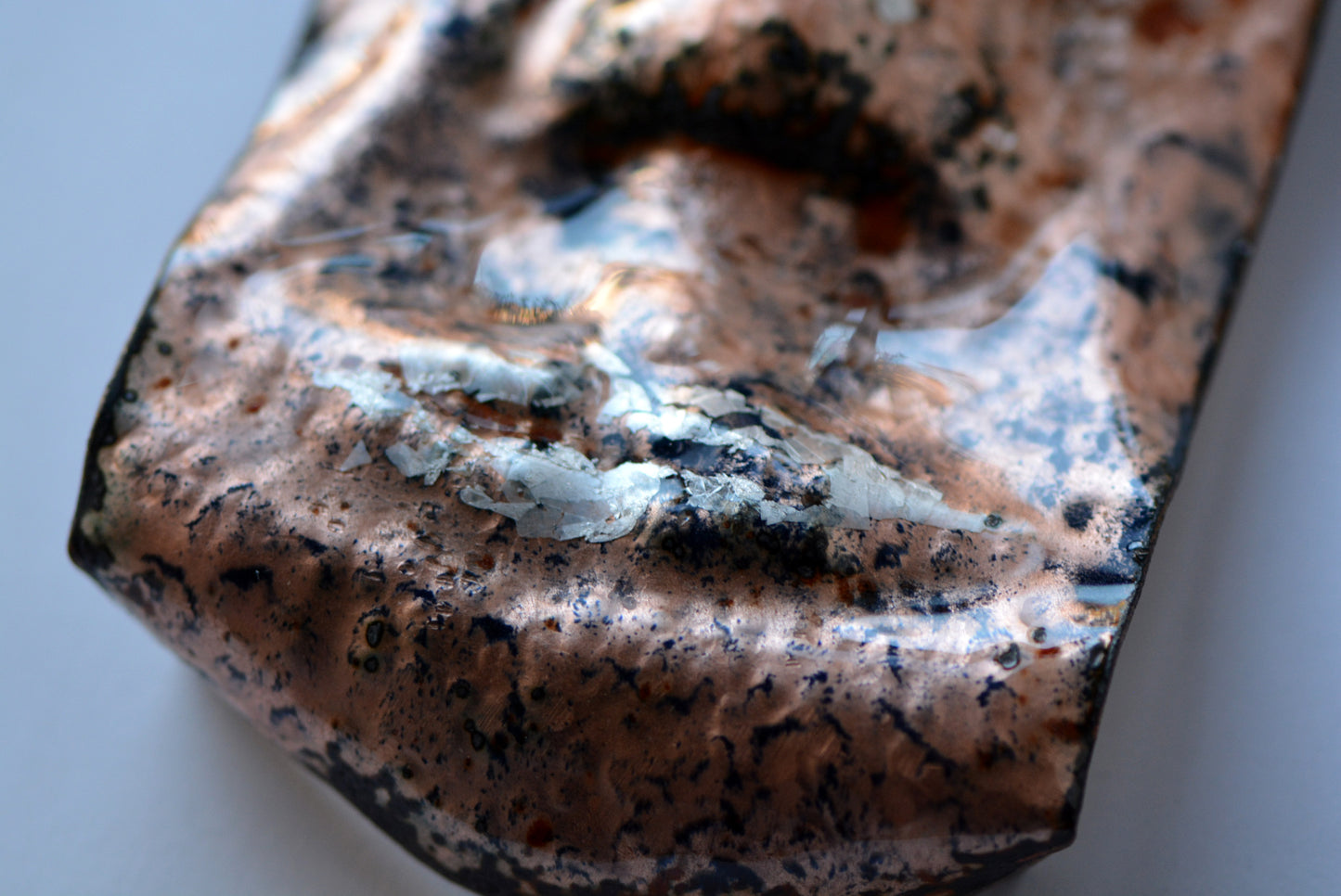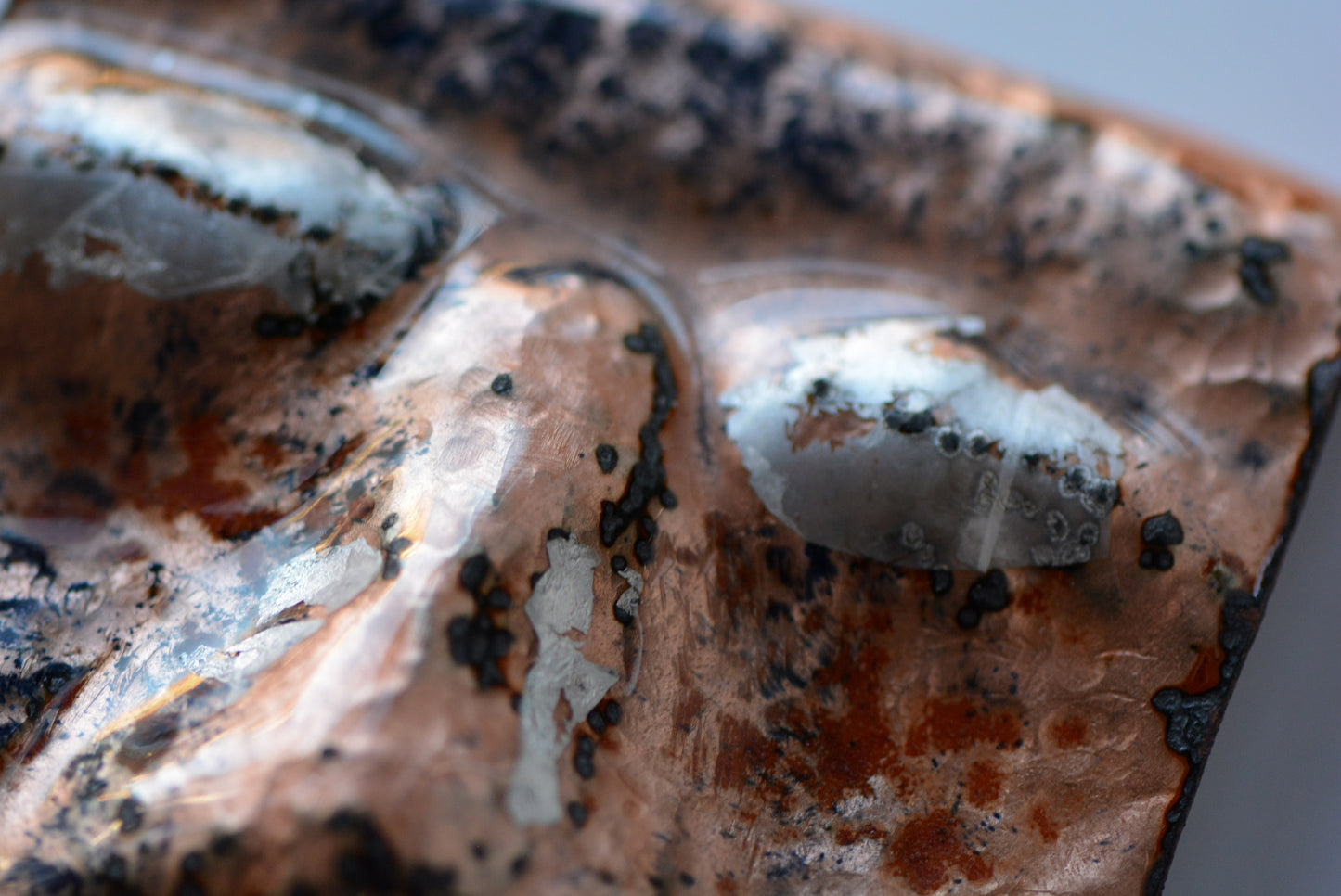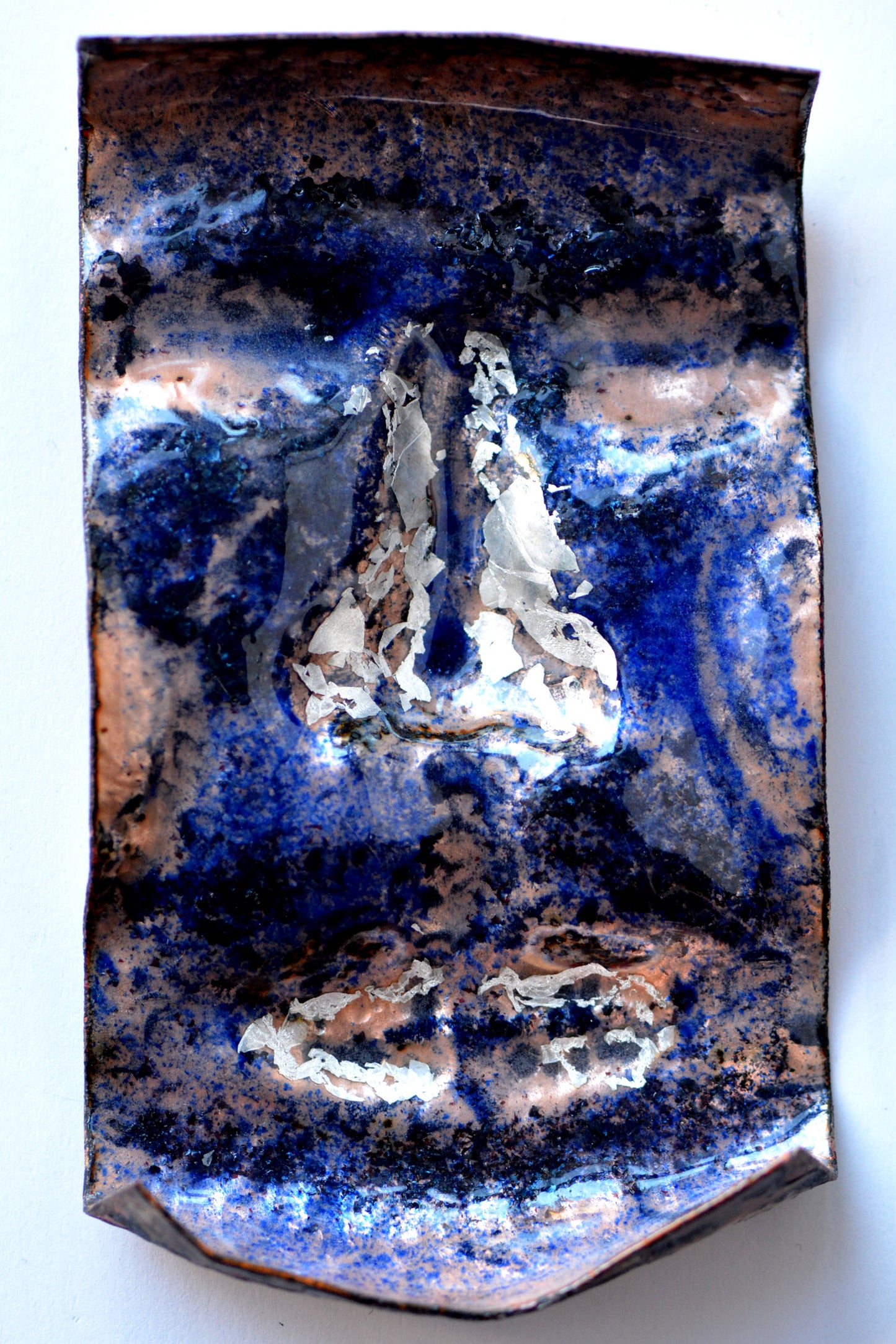Janus Lab Italy
La Vecchia Donna
La Vecchia Donna
Vecchia donna sulla riva notturna, sotto la luna
Il volto cerca di concepire e incarnare la vita attraverso la pelle segnata di un’anziana donna. Baciata dalla luna, la sua superficie riflette un bagliore argenteo — una sottile foglia d’argento cattura la luce sulle labbra, sul naso e sugli occhi. Le palpebre restano come una linea scura, pozzi profondi e dimenticati.
Sul retro, la texture trattiene il freddo della luce lunare. L’ossidazione del rame (firescale) e lo smalto nero arricchiscono la superficie già complessa del metallo martellato; ombre scure ne seguono i contorni, raccontando una vita lunga e vissuta. Le foglie d’argento illuminano occhi e labbra, come se il tempo stesso avesse steso un ultimo tocco di trucco — un ornamento di dignità e memoria.




Enamel - Le Grand Feu
“Smalti a Fuoco_ Un’arte di Sottecchio”
The art of fire enameling is an ancient and highly complex craft.
Rooted in precise gestures and knowledge acquired over time, it has, through the centuries, transformed simple metals—such as copper or silver—into objects of great value and artistic significance.
Today, it is largely confined to a few specialized creations and is often mistaken for industrially produced items or those made with polymer-based enamels. As a result, it remains mostly associated with traditionally styled aesthetic prototypes.
Only in rare cases has it broken free from classical aesthetics, giving rise to modern works crafted using ancient techniques—thanks to great, though now nearly forgotten, artisans.
These are the foundations of our own deeply personal journey: not only a rediscovery of enamel’s potential, but also a search for a new, contemporary language—one that reimagines how fire enameling can still express beauty and sophistication today.
The Origin of ...
Stories of ancient civilizations lost to time—where traces begin to resurface through climate change and environmental degradation. Both in icy regions and equatorial rainforests, new signs of past civilizations emerge.
Starting from those same carved stones—faces sculpted by ancient hands—I began to wonder about human expression: how to represent it, how to give it form. I started experimenting with shaping expressions -mimicking ancient relics- on copper, sculpting the metal and recreating those same lines. The hammer transforms the material in two ways: on one side it expands and deforms the surface; on the other, it leaves marks rich with texture.
It became inevitable for me to begin sculpting real faces, seeking to capture their emotions—their wonder, sadness, and joy. I am fascinated by how ancient civilizations, and more broadly by how cultures, have sought to depict their people—their identity, their symbolism, their spirit. That is the path this project follows.




